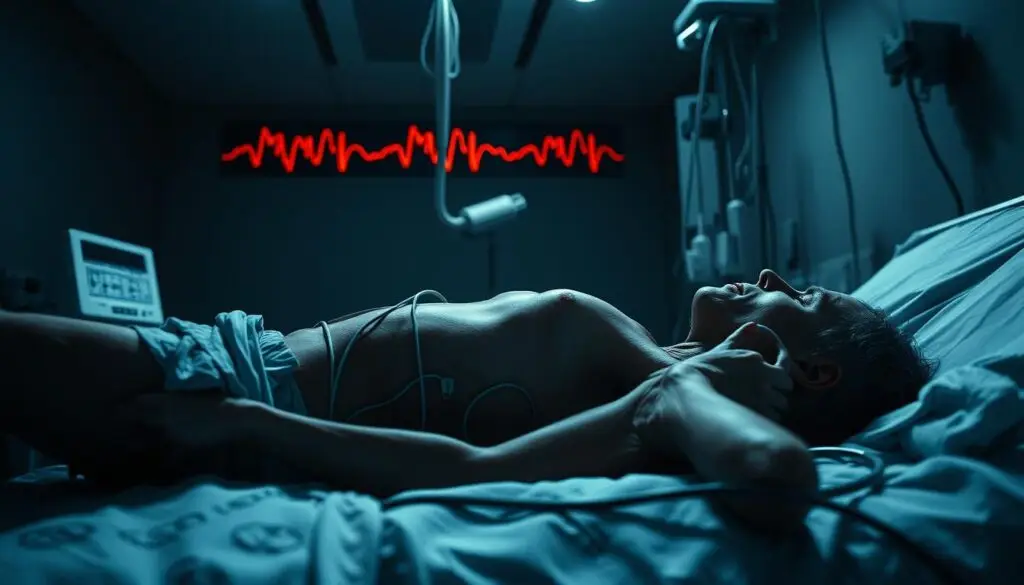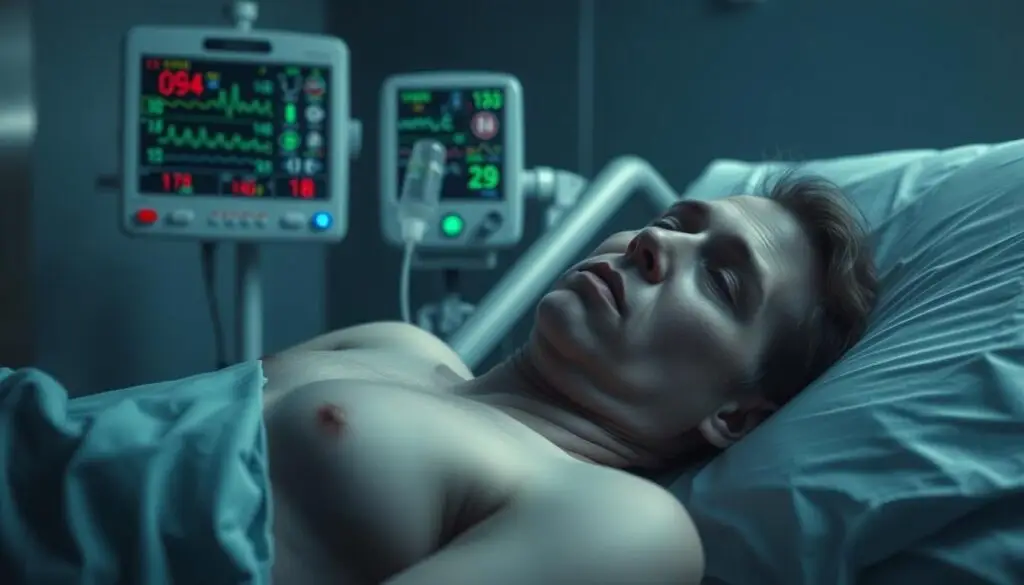You need clear, fast guidance when your body starts losing more fluid than it takes in. Dehydration can sneak up during heat, exercise, or illness, and thirst is not always an early alarm, especially for older adults.
Paying attention now protects your health. Simple checks — like pale, straw-colored urine versus darker urine — give you a quick read on hydration. Drinking water and other plain fluids at meals and through the day helps keep electrolytes balanced.
Limit alcohol and cut back on sugary, caffeinated drinks. They can raise your risk of feeling worse. This section shows the fastest way to spot trouble and act before problems escalate.
Key Takeaways
- Learn what dehydration does to your body and when to act.
- Use urine color and steady water intake as easy checks.
- Older adults and children may not feel thirsty early—watch closely.
- Avoid alcohol and limit sugary or highly caffeinated beverages.
- Know when home care is fine and when to contact a doctor.
- Simple, daily habits prevent most hydration-related risks.
Why spotting dehydration early matters for your health right now
Spotting early fluid shortfalls keeps you safer during heat or illness. Thirst often trails actual need, so you should act before you feel parched.
Older adults and some children may not notice thirst. That raises the immediate risk of dizziness, confusion, and low energy. A simple urine check helps: clear to pale straw means you’re likely fine; darker urine means drink more water or other plain fluids.
When you plan drinks around activity, you stay ahead of losses. Schedule fluids before, during, and after exercise, hot days, or any feverish illness.
- You act faster if you don’t wait for thirst to start drinking.
- Keep a bottle within reach and take small sips often.
- Watch behavior changes in a child or older adult, not just reported thirst.
| Situation | Suggested amount | When to increase | Quick check |
|---|---|---|---|
| Everyday (adults) | 8–12 cups/day | Hot weather, exercise | Urine pale straw |
| During activity | 4–8 oz every 15–20 min | High intensity, long duration | Less fatigue, steady pace |
| Children | Varies by age; sip often | Fever, vomiting, hot play | Wet diapers, alert |
| Illness | Extra fluids and salts | Diarrhea, fever | Urine darker → drink more |
What dehydration is and how it affects your body’s fluids, blood, and temperature
Running low on fluids changes how your cells signal, how your blood flows, and how you handle heat. Dehydration happens when you lose more water than you take in, cutting total body fluids and the electrolytes that cells need to work.
How fluid loss disrupts electrolytes and temperature control
You lose fluids and electrolytes through sweat, urine, breathing, vomiting, and diarrhea. When sodium and potassium fall out of balance, cell signaling and muscle function suffer. That can cause cramping and nervous misfires.
As fluids drop, circulating blood volume falls. That lowers blood pressure and can make you lightheaded when you stand. With less blood to carry oxygen, tissues tire faster and you may feel short of breath during activity.
- You strain your heart as it works harder to keep circulation steady.
- You struggle to cool down because sweating and evaporative cooling become less effective.
- For long or sweaty efforts, water helps most times; use a sports drink during activity over an hour to replace lost electrolytes.
Plan ahead: even a modest fluid deficit can reduce performance and focus. Enter activity with reserves and sip regularly to protect blood flow, pressure, and temperature control.
Signs of Dehydration: Mild to Severe Symptoms
A drop in focus or a dizzy moment when you stand up are quick alerts that fluid levels may be low. Pay attention to early changes so you can act fast.
Mild to moderate cues include persistent thirst, a dry mouth, darker urine, low energy, and lightheadedness. These usually improve after steady sipping and rest.
Worsening warning signals are confusion, a racing heart, fainting, and very low blood pressure. These indicate severe dehydration and need urgent care.
Visible checks help: sunken eyes, skin that returns slowly after a gentle pinch, and reduced urination are all meaningful signs. If urine looks darker than pale straw, drink and reassess within an hour.
- Track how often you urinate; very little output is a red flag.
- If you feel nauseated, sip slowly rather than gulping.
- For clear guidance, review trusted resources on dehydration details.
Age-specific warning signs in children, adults, and older adults
Age changes how your body signals low fluid, so your checks should match the person you care for. Watch for clear, simple cues that differ by age. Acting early helps prevent serious dehydration and keeps recovery faster.
Infants and young kids to watch
You check infants closely. Look for no tears with crying, a dry mouth, and fewer wet diapers. If a baby has gone three hours without a wet diaper, get fluids and seek advice.
Also check the soft spot and eyes; a sunken soft spot or sunken eyes is urgent. Rapid heart rate, low energy, irritability, and skin that stays pinched are other red flags.
What to notice in working-age adults
For adults, pay attention to extreme thirst, dark urine, and less frequent urination. Tiredness, dizziness, confusion, sunken cheeks, and poor skin turgor mean you should sip fluids and rest.
Older adults: higher risk and hidden cues
Older adults have less total body water and a weaker thirst drive. Medicines like diuretics can mask need, so encourage regular drinking—especially during a fever or hot weather.
Watch for subtle changes: confusion, sleepiness, or dizziness may be the first clue that their fluid status is falling.
Practical steps: offer small, frequent sips or oral rehydration solutions for children and older adults, keep drinks within reach, and call a clinician sooner for vulnerable people.
| Age group | Key checks | When to act | Recommended action |
|---|---|---|---|
| Infants | No tears, dry mouth, few wet diapers | No wet diaper for 3 hours; sunken eyes/soft spot | Offer fluids, seek prompt medical advice |
| Children | Low energy, poor skin rebound, vomiting/fever | Rapid fluid loss or persistent vomiting | Small frequent sips or oral rehydration |
| Adults | Dark urine, dizziness, tiredness | Worsening confusion or fainting | Fluid replacement, rest, seek care if severe |
| Older adults | Reduced thirst, medicines effect, confusion | Illness, heat, or subtle behavior change | Increase intake, review meds, contact clinician |
Common causes and risk factors you can control
You can control several common causes that drive rapid fluid and electrolyte loss. Plan ahead so sudden problems don’t catch you off guard. Simple steps cut the chance that low fluids turn into an emergency.
Diarrhea, vomiting, and fever
Sudden diarrhea or repeated vomiting causes fast loss of water and minerals. A fever raises your fluid needs, too.
“Replace lost fluids and electrolytes early—small, frequent sips are safer than large gulps.”
Heat and activity
Hot, humid weather and hard exercise increase sweat loss even when you don’t feel thirsty. Dress in lightweight, breathable clothing and sip fluids during work or play.
Medicines, diabetes, and alcohol
Certain medicines, uncontrolled diabetes, and alcohol raise urine output and dehydration risk. Review your meds and manage blood sugar to lower that risk.
- Plan for diarrhea, vomiting, or fever — replace fluids and electrolytes quickly.
- Use sports drinks during long, sweaty efforts to replace sodium and potassium.
- Refill fluids during and after outdoor tasks; don’t wait for thirst.
Complications to avoid: heart, kidneys, heat injury, and hypovolemic shock
A steady loss of water can quickly make blood thicker and circulation fragile. When that happens, your body works harder to move a smaller fluid volume. That extra strain can push you toward dangerous outcomes if you don’t act.

Heart and circulation. Thicker blood and lower circulating volume force your heart to beat faster. This can cause tachycardia, low blood pressure, dizziness, and fainting. You protect your heart by keeping fluids steady and checking blood pressure when you feel lightheaded.
Kidneys and urinary tract
Repeated fluid loss raises the risk of urinary tract infections and kidney stones. Over time, severe shortages can stress renal function and lead to acute kidney failure. Drink regularly to lower these risks and protect kidney health.
Heat-related illness and shock
During hot spells or heavy work, cramps can progress to heat exhaustion and then heatstroke. Severe fluid shortage can cause hypovolemic shock—low blood volume that is life threatening. If someone is confused, fainting, or very weak, treat it as an emergency and get rapid fluid replacement and medical help.
- You shield the heart and lower clot risk by staying hydrated.
- Prevent dangerous dips in blood pressure that lead to falls, especially in adults with other conditions.
- Hydrate before activity, rest in shade or AC, and watch early warning signs.
“Treat severe fluid loss as an emergency—rapid replacement can prevent shock.”
Hydration strategies that work: water, electrolytes, and smart habits
Drink with a plan so your body keeps steady water reserves through the day. Small, regular sips are easier to sustain than large gulps and help prevent sudden fluid shortfalls.
Daily targets and quick checks: Use urine color as a fast status check—clear to pale straw means you are likely fine; darker means drink more. Make water your first choice at meals and carry a filled bottle.
Before, during, and after activity
Before outdoor work or exercise, drink 16–20 ounces 1–2 hours ahead. While active, sip 6–12 ounces every 10–15 minutes. Afterward, replace losses with 16–24 ounces to speed recovery.
Choosing the right drinks
For efforts under an hour, plain water is enough. For long or very sweaty sessions, choose a sports drink to restore sodium and potassium. Limit alcohol and cut back on caffeine and sugary drinks when you need optimal hydration.
Foods and flavor boosts that help
Add lemon, lime, berries, or cucumber to your bottle. Eat high-water foods — soups, watermelon, strawberries, cucumbers, and tomatoes — to boost intake and mineral content.
Tip: Tie sipping to routines (wake-up, commute, meals) and adjust amounts for temperature and humidity so you get enough water without overdoing it.
When to call the doctor or go to urgent care
Seek immediate care when someone becomes confused, faints, or has a very fast pulse. These are urgent red flags for severe dehydration and need prompt treatment.

Call a clinician right away if diarrhea lasts more than 24 hours, if you or a loved one is unusually sleepy or cranky, or if you can’t keep fluids down because of repeated vomiting.
If a fever hits 102°F or higher, or you see bloody or black stool, get care fast. Older adults and children are at higher risk and may not report thirst.
- Go now for confusion, fainting, rapid heart rate, sunken eyes/cheeks, or skin that stays pinched.
- Seek help if dark urine or very infrequent urination continues despite drinking more water.
- While arranging care, move to a cool place, rest, and take small steady sips; avoid alcohol and stop strenuous activity.
- Bring a list of recent drinks, medicines, and any heat or activity exposure so clinicians can assess blood pressure and other conditions quickly.
“Severe dehydration needs immediate treatment—trust your instincts and get help without delay.”
Conclusion
Make steady sipping a habit so your body stays balanced during heat, work, and illness.
Staying hydrated supports circulation, clear thinking, digestion, and kidney health. Keep water within reach and use urine color as a quick gauge: pale straw usually means you have enough water; darker means drink more.
Choose plain water most of the day and add electrolyte drinks only for long, sweaty efforts. Limit alcohol and be cautious with caffeine. If you have diabetes or a clinician-directed fluid limit, follow medical advice for your amount and timing.
Simple tips: sip regularly, adjust for temperature and activity, and watch mouth, skin, eyes, and energy. Act early so moderate dehydration does not become severe dehydration—small, steady changes protect your heart and blood pressure every day.



